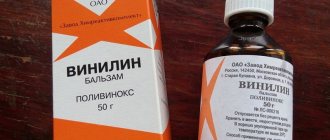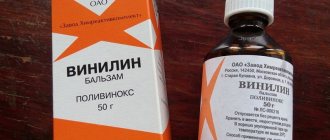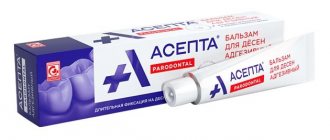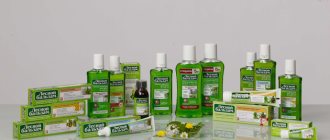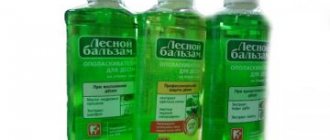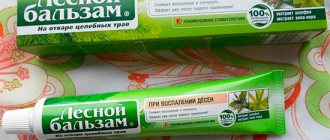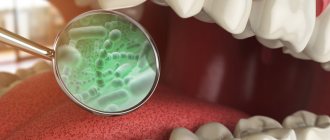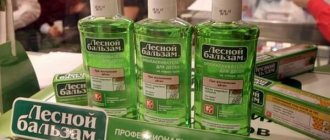The main symptoms of Vincent's stomatitis
The most common symptom is the presence of numerous ulcerations in the oral cavity: on the inside of the cheeks, lips, palate and other areas. Other manifestations may vary, depending on the degree of the disease.
Symptoms of mild ulcerative stomatitis:
- increased salivation;
- pain in the mouth, especially when palpating soft tissues;
- bleeding gums, especially when eating and brushing teeth;
- swelling of the gums.
Manifestations of ulcerative necrotic stomatitis of the middle stage.
- wounds with necrotic crusts;
- bleeding gums;
- unpleasant odor;
- pus secreted from periodontal pockets;
- enlarged and painful lymph nodes;
- muscle weakness and loss of strength;
- temperature increase;
- loss of appetite.
Symptoms of ulcerative stomatitis of complex stage.
- severe weakness;
- stomach ache;
- nausea;
- vomit;
- increased body temperature;
- deep ulcers that can reach the bone tissue.
If these symptoms appear, you must immediately consult a dentist! The disease is treated exclusively under the supervision of an experienced doctor - treatment at home can significantly aggravate the situation.
"Vinilin": instructions for use
Vinilin ointment is used externally, applied to napkins, and then to the affected area (if necessary, it is first washed and wiped dry). Tablets are taken 1 pc. Once a day at night - preferably 5 hours after the last meal.
Instructions for using the solution internally are as follows:
- peptic ulcer – a teaspoon a day, then 1.5 times less, also once a day for 17-20 days;
- gastritis with high acidity, heartburn - one teaspoon on the first day, then 1.5 times less, also once a day for 9-11 days.
Shostakovsky's balm is used to treat stomatitis and treat ulcers. In this case, it is applied to a clean cotton stick and soaked into the affected area 2-3 times a day. After the procedure, you should not eat or drink for half an hour. To treat a sore throat, wipe the throat with a clean napkin, which is pre-moistened in Vinyl.
How to treat ulcerative stomatitis?
Effective treatment of Vincent's ulcerative stomatitis should be comprehensive:
- Anesthesia – performed to relieve acute pain. Experts recommend applying compresses with pain-relieving solutions.
- Removing rashes. This should only be done by a doctor. First, compresses with a softening composition are applied to the ulcers, after which the crusts are gradually cleared from the surface of the mucosa, treating with hydrogen peroxide, potassium permanganate, chlorhexidine, etc.
- General treatment. It involves taking antihistamines that relieve general tissue irritation and the inflammatory process. For severe manifestations and complex symptoms, antibiotic therapy is prescribed. It is also recommended to take a course of vitamin therapy.
- Sanitation of the oral cavity. Effective treatment of caries, removal of pathological teeth. For wound healing, treatment with keratoplasty preparations, gels and ointments is recommended.
How to treat ulcerative stomatitis with diet?
Diet alone will not be enough to completely cure the disease, but it is mandatory to speed up the recovery process. With such a diagnosis, it is very important to devote time to proper nutrition.
For stomatitis, the following products are recommended: vegetables, fruits, viscous porridges, greens, milk and dairy products, cheese, soups, herbal infusions, green tea, steamed meat without salt, low-fat fish, natural vegetable juices.
Patients with this disease are not recommended to eat: sour fruits and vegetables, citrus fruits, pickled and peppered foods. Also not recommended are foods that provoke allergies, too sweet foods, dry foods and those foods that can cause mechanical damage to the mucous membrane (nuts, crackers, dried fruits, etc.).
Symptoms of chronic pharyngitis
Symptoms of chronic pharyngitis
- Soreness in the larynx.
- Soreness.
- The patient may complain of finding a foreign object in the throat.
- Discomfort while swallowing.
- Dry cough.
- Bad breath.
During the improvement, the patient notices minor discomfort, but during the period of exacerbation, the symptoms of chronic pharyngitis in adults can be quite serious: fever, loss of strength, weakness, which indicates intoxication. Each form has its own symptoms to one degree or another, so only an otolaryngologist can determine the disease. If the above concerns arise, it is necessary to urgently contact an ENT specialist to diagnose chronic pharyngitis.
Where to buy Vinilin: price, analogues, reviews
The product can be bought at a pharmacy without a prescription at an affordable price of 80 rubles for a 50 g pack or 130-150 rubles for a 100 g pack. Reviews about this ointment are extremely positive - almost 100% of buyers recommend it.
Among the positive aspects, they note the real effect, safety, almost complete absence of contraindications and side effects. Wounds and ulcers heal very quickly, while the skin is restored and looks attractive. Some patients successfully use the ointment to treat stomatitis in children. However, in such cases it is better not to risk it and consult a doctor.
One of the disadvantages is sometimes the sticky consistency associated with the fat base. The ointment may leave marks on clothing. Therefore, it is better to use it at home. Or make compresses with plastic bags to protect clothes.
Forms of chronic pharyngitis:
- catarrhal
- hypertrophic
- atrophic
With the catarrhal type, inflammatory processes are observed in the upper layers of the laryngeal mucosa, which causes slight swelling.
With the hypertrophic type, the mucous membrane grows with the formation of tubercles.
The greatest danger is atrophic pharyngitis, in which thinning and dryness of the pharyngeal mucosa are observed. Therapy for the atrophic form of the disease is quite long.
Treatment of chronic pharyngitis
The specialist examines the mucous membrane of the larynx with a pharyngoscope. Each form has its own clinical picture.
- The catarrhal form is expressed in redness, swelling, and a small accumulation of mucus in the larynx.
- Chronic hypertrophic pharyngitis is characterized by more pronounced swelling and thickening of the laryngeal mucosa; a venous network is observed, as well as small red nodules.
- Atrophic pharyngitis is characterized by a significant feeling of dryness, the appearance of crusts, ichor, and thinning of the mucous membrane.
To determine which pathogen caused the disease, the ENT takes a scraping and sends it for analysis.
Medicines VINYLIN (for internal use)
Instructions| History of creation | What cures | Where can I buy |
Gastritis Ulcers in children Oral ulcers, gingivitis, stomatitis, glossitis, leukoplakia Periodontal disease Erosive and ulcerative processes Wounds and abrasions Burns Use in surgery Use in dentistry
Summary of a clinical study of the drug Vinilin (active ingredient Polyvinox)
Use of Vinilin in gastroenterology In the 70s and 80s, clinical trials of Vinilin were conducted as a treatment for gastric and duodenal ulcers, and scientists noted the high therapeutic activity of the drug: Vinilin, which inhibits the secretion of gastric juice and reduces its acidity, is one of effective antiulcer drugs. Under the influence of Vinilin, both the number of ulcers decreased and the inflammatory reaction - hyperemia, swelling - decreased. However, doctors have identified a number of contraindications when taking the medicine internally, in particular, “the use of Vinilin is contraindicated in people suffering from diseases of the gallbladder and kidneys.” A study of the effectiveness of the clinical use of the drug Vinilin for nonspecific inflammatory bowel diseases in children was conducted at the Nizhny Novgorod Research Institute of Pediatric Gastroenterology of the Federal Service for Health (Roszdrav) (Nizhny Novgorod). Since 1989, on the basis of the 2nd gastroenterological department, the drug Vinilin has been used in the complex treatment of children suffering from ulcerative colitis and Crohn's disease. On the basis of the institute, our own recipe was developed using Vinilin: Rp: Vinilini 22.5; Bismuthi subnitratis 7.5; Zinci oxydi 1.5; 0l. Oliva ad 500.0. In the proposed recipe, Vinilin was used as a drug that promotes tissue regeneration and improves epithelization. Bismuth subnitrate and zinc oxide are used as astringents that help stabilize supra-epithelial mucus. Olive oil was used as a formative component. The mixture was prescribed mainly in a hospital setting and, less often, for outpatient treatment at the place of residence, 15-30 ml (depending on the child’s ability to maintain a dose of at least 30 minutes) endorectally 1-2 times a day. A single administration was carried out in the evening. The duration of treatment was determined individually, on average up to 20-25 days, and according to clinical indications longer. Indications for use were: persisting activity of the inflammatory process in the distal parts of the colon against the background of basic therapy, preoperative preparation and postoperative period, optimization of mucosal repair processes during periods of subsiding exacerbation and remission. Limitations (relative contraindications) to the prescription were severe diarrhea syndrome (inability to retain the drug) and severe activity of the anus (painful manipulation). A retrospective analysis of the medical records of 35 children (diagnosed with ulcerative colitis (UC) 31 children, Crohn's disease 4 children) aged from 4 to 17 years (18 girls and 17 boys) who were under observation at the institute clinic (group 1) was carried out. . The average age of patients is 10.6 years. Four of these children received Vinilin as preoperative preparation and postoperative period, 10 people - at the height of exacerbation and 21 children - during the period of subsiding exacerbation. As a comparison group, the medical histories of 18 children were analyzed, selected according to the “copy-pair” principle according to age, sex composition and characteristics of clinical manifestations (group 2). All children underwent a comprehensive clinical, laboratory and instrumental examination to clarify the nature of the pathological process. According to the results of treatment, two children did not show any dynamics, and one child had a worsening of hemocolitis (during treatment at home). The remaining children showed an improvement or a very good effect from the administration of local treatment with Vinilin. The effectiveness of local therapy was assessed according to clinical parameters: frequency of bowel movements, the presence of macro- and microscopic blood, as well as endoscopic characteristics of the condition of the mucous membrane of the distal colon. Before local treatment was prescribed, all patients with residual inflammation of the mucous membrane of the distal parts of the colon maintained a moderate increase in stool frequency (up to 2-4 times a day) and periodic (2-3 times a week) appearance of microscopic and even visually detectable blood impurities in the feces . After therapy, these phenomena stopped in 100% of patients. With the use of microenemas with Vinilin, the endoscopically determined activity of the process also decreased faster. Thus, up to 80% of children in the first group after 20 procedures had no visual markers of inflammation, while the rest retained only moderate swelling of the mucous membrane. In the control (2) group, 50% retained symptoms of severe edema with a complete absence of vascular pattern. Thus, the use of Vinilin in the complex therapy of nonspecific inflammatory diseases of the colon promotes better regeneration of the colon mucosa and stabilization of epithelial cell membranes. Vinylin for internal administration is a drug necessary for planned complex therapy of nonspecific inflammatory diseases of the colon, preferably during the period of subsidence of exacerbation and for stabilizing remission.
Treatment of peptic ulcer in children with Vinilin. The clinical study took place in the children's hospital in Borovichi (Novgorod region). From 1962 to 1967, there were 16 children suffering from peptic ulcers in the hospital. Gastric ulcer was diagnosed in 5 children; duodenal ulcer - in 9 children; peptic ulcer of the stomach and duodenum - in 2 children. The patients had a characteristic clinical picture of peptic ulcer disease, and a niche was determined by x-ray examination. 15 children had increased acidity and only one child with gastric ulcer had normal acidity. A number of children were found to have concomitant diseases - caries and ascariasis. 2 children were re-admitted to the hospital with relapses (one was admitted twice, and the other three times). All children were treated with Vinilin (Shostakovsky balm), which they tolerated well. The purified balm was used 8 hours before meals. All patients were on a bland diet and received multivitamins. Some patients were given intramuscular injections of vitamins B1 and B12. Treatment was carried out for 3 weeks, but the children were in the hospital for up to 35-55 days. All patients who were found to have caries and ascariasis had their oral cavity sanitized and dewormed. All these children were under systematic monitoring until 1968. All children, except one, were discharged with complete scarring. There were no exacerbations, my health remained good. During control fluoroscopy of the stomach and duodenum, no ulcers were detected. As a result of these observations, we can conclude that it is advisable to use the drug Vinilin (Shostakovsky's balm) as one of the means of treating peptic ulcers in children.
Use of Vinilin in dermatology Vinilin is used both for the treatment of small wounds and abrasions, as well as serious injuries and purulent wounds. The technique for applying a vinyl bandage is the usual one: a gauze cloth moistened with vinyl on the wound. If the wound is a significant cavity, vinylin is poured into it directly and a gauze swab is inserted there. The treatment time with the balm is much shorter than when using a conventional wound healing agent. Clinical trials of the drug Vinilin (Shostakovsky balm) were carried out in the hospital of Military Unit No. 41568 on April 14, 2004. Study drug: Vinilin (Shostakovsky balm) produced by Sovkhimtekh CJSC (FSP 42-04423282-02). Over the course of 5 years, the dermatovenerological department of the hospital treated more than 200 patients (with pustular skin lesions in the stage of scarring and epithelization) using the drug “Vinilin” produced by Sovkhimtekh CJSC. Compared to the group of patients who did not receive this device, the healing time decreased by an average of 3.6 - 4.1 days. Thus, it should be noted the obvious effectiveness of using the drug “Vinilin” produced by Sovkhimtekh CJSC, obtained through its practical use.
Vinilin as a replacement for Peruvian balsam in some erosive and ulcerative processes. Clinical trials of the drug Vinilin were carried out under stationary conditions in the skin clinic of the Moscow Medical Institute named after I.V. Stalin (Moscow) and partially on an outpatient basis - at the 18th medical station of the Yaroslavl railway, where the drug Vinilin was used in all cases when an ointment of the Mikulicz type was indicated. The number of patients used here has not been calculated, since this ointment was used widely, along with others used in dermatovenerology. Thanks to the kind assistance of the Department of Organic Chemistry of the USSR Academy of Sciences represented by prof. M.F. Shostakovsky had the opportunity to observe the effect of Vinilin balm in dermato-venerological practice in some erosive and ulcerative processes of the skin. Vinilin was used in the form of bandages, collodion or cleol stickers with a pure preparation or in an ointment like Mikulicz. Erosive and ulcerative pyoderma of staphylococcal and streptococcal origin (impetigo, opened carbuncles, boils and partially ecthymas) relatively quickly cleared of crusts and pus, lost their smell, if any, inflammatory phenomena and pain passed, gradually became well granulated and in most cases were firmly epithelialized . A completely favorable result was observed from Vinilin in infected small burns of II and III degrees of various origins - in several cases thermal and in one case of a III degree burn after diathermy. A good effect was observed in the treatment of buboes and ulcers after them with chancroid. After puncture and extraction of pus with a syringe, pure Vinilin balm was injected into the cavity of the bubo, which usually caused a rapid decrease in inflammatory phenomena and a gradual reversal of the process. In one case of chancroid (case history No. 2231, 1946), an extensive ulcer after a bubo healed after 4 weeks, just like ulcers after autoinoculation on the thigh. In another case, a 59-year-old patient (case history No. 6672, 1947) with tabes, dystrophy, a mobile kidney and a flaccid ulcer in the area of the upper iliac crest on the right, which did not heal for 3 months, complete scarring occurred in 4 weeks. In one case (case history No. 9447, 1947), with a deep abscess of the buttock that arose after an injection in the treatment of syphilis, Vinilin, introduced into the cavity after sucking out the pus with a syringe, made it possible not to open the abscess surgically and caused relatively rapid healing. In the case of severe sepsis after universal salvarsan dermatitis, accompanied by pneumonia in the patient and the formation of numerous sluggish gangrenous ecthymas, the external use of Vinilin was very convenient and quite effective: Vinilin showed distinct deodorizing and anesthetic properties. Gangrenous ecthymas of various sizes and depths, in some places merging and occupying significant areas on the skin of the face, extremities, external genitalia, perineum and buttocks, as well as ulcerations such as bedsores in the sacral area, gradually cleared of pus, lost their smell and pain, were filled and epithelialized. When using Vinilin in an ointment like Mikulich instead of Peruvian balsam, it was necessary to take into account that silver nitrate in an aqueous solution, usually used for lotions and tampons in a concentration of 0.25 to 2%, can be prescribed in a higher percentage in the ointment. Therefore, we changed the amount of silver and vinylin according to the corresponding indicators. Instead of Vaseline alone, we sometimes also used equal amounts of Lanolin.
| Rp. Argenti nitrici 0.25-1.0 Balsami vinylini 1.0-3.0 Vaselini 30.0 Mf ung. D S. Ointment | Rp. Argenti nitrici 0.25-1.0 Balsami vinylini 1.0-3.0 Vaselini, Lanolini aa 15.0 Mf ung. D S. Ointment |
It should be noted that even with long-term storage - for several months - these ointments with Vinilin do not darken so quickly from the decomposition of silver, do not contaminate linen and skin, and do not have a pungent odor like ointments with Peruvian balsam. The data obtained so far allow us to recommend the synthesis synthesized by Academician A.E. Favorsky and M.F. Shostakovsky balm Vinilin for a more decisive and widespread introduction into dermatology and venereology - for erosive and ulcerative processes of the skin, especially in cases where there are indications for the use of an ointment like Mikulicz. The development and introduction of Vinilin in surgery, possibly in therapy, in obstetrics and gynecology (for cracked nipples and anus), in dermatology and venereology will make it possible to refuse the import of South American, expensive Peruvian balsam from abroad, since our synthetic balm has a very valuable properties that are not inferior to Peruvian balsam, and in some respects superior to the latter.
